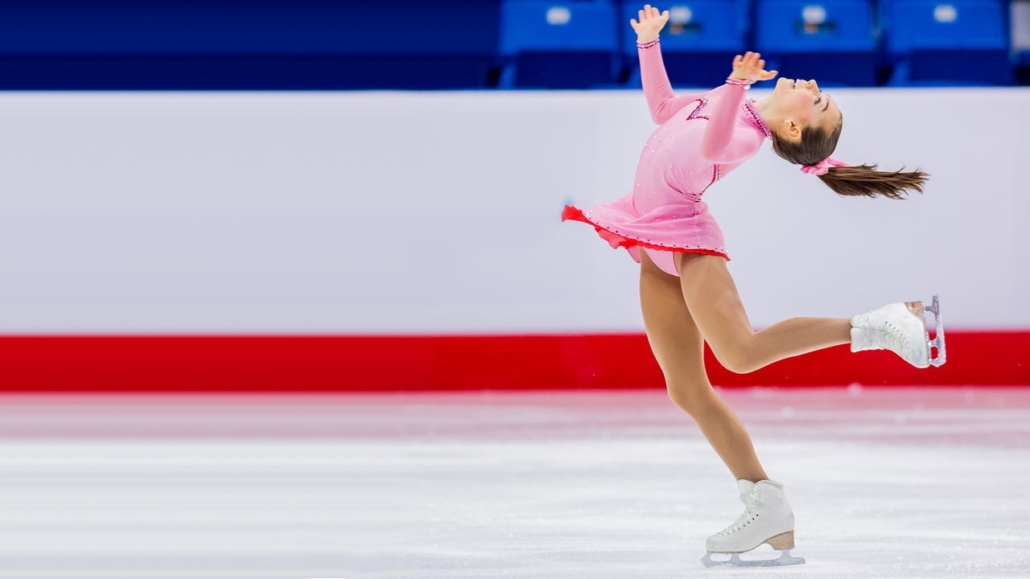Figure skating is all about curves. The most basic element is the edge of the skate. Understanding how edges work will help beginning skaters glide smoothly, and will help figure skating spectators understand the skating jumps, footwork, and spins they see when watching the winter Olympic figure skating competitions.
Figure Skating Edges are Key to Gliding
A skater’s blade has two sides, or edges. The outside edge is on the outside of the skate (the outside of the skater’s foot); the inside edge is on the inside of the skate.
To understand edges, imagine a skater gliding forward on the left leg, and leaning to the left. If the skater continued to glide on that foot, she would make a counter-clockwise circle on the forward outside edge (because the skater is leaning to the outside of the skating foot). Making circles by skating on edges was the basic technique that was the foundation of the old-fashioned figure eights that used to be part of Olympic figure skating competitions.
Now imagine skating backwards on the same (left) foot, also in a counter-clockwise direction. The skater would still be on the left leg, but to continue counter-clockwise, she would now have to lean to the inside of the foot, which means skating on the back inside edge. Clear as mud, as they say. If it’s difficult to picture this, try walking in a circle, and imagining which foot would lean in which direction if a skater were gliding.
Skaters have four edges: inside and outside for each foot. In addition, they can be skating backwards or forwards. So altogether, there are eight edges: For example, the left foot can skate on the forward outside edge (leaning to the skater’s left), on the forward inside edge (leaning to the right), on the backward inside edge (leaning to the right), and on the backward outside edge (leaning to the left). Of course, the right foot has the same four options.
Figure skating jumps are identified by which edge a skater jumps from and whether or not a toe pick is used to help propel the skater into the air. So the variables include whether the skater takes off from the inside edge or the outside edge, and whether the picking foot is the inside foot or the outside foot. Five out of the six jumps (all except the Axel) take off from skating backwards. All the common jumps end on the backward outside edge.
The Figure Skate’s Toe-Pick helps With Jumps, Foot-Work, and Spins
The other Important part of the figure skate is the toe-pick, which is the serrated, pointy part at the front of the blade near the toe. The toe-pick is used in footwork to grip the ice and help the skater change direction or jump a little. It can also be used in some jumps to help propel the skater into the air. And it is is used in some spins.
For beginning skaters, however, the toe pick can be an impediment: If skaters learn too far forward, they can trip on it. Also, beginning skaters tend to push off from the toe-pick. Advanced skaters don’t do this. Instead, they push sideways, off of the inside edge of the blade.
By understanding the basic of edges and the use of the toe-pick, beginning skaters can move more fluently on the ice, and can make sense out of the language of figure skating used by commentators during the Olympics.
